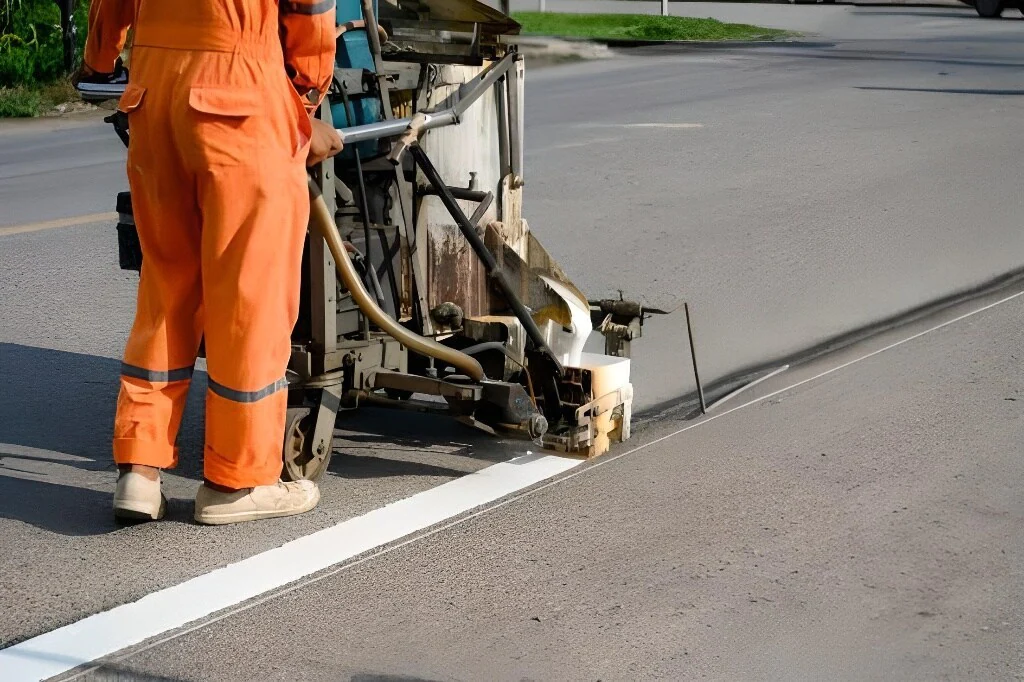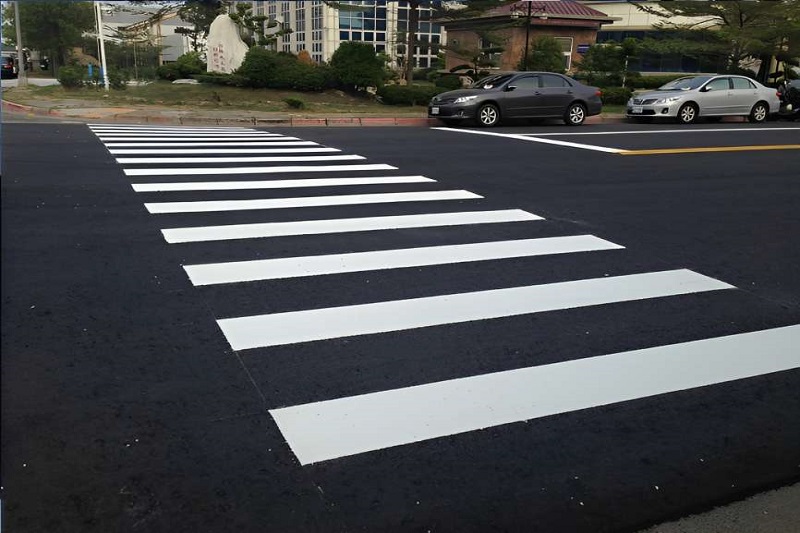
Introduction
Road safety is a significant concern for governments, road authorities, and drivers worldwide. One crucial aspect of ensuring safety on the roads is the use of clear and durable road markings. Thermoplastic road marking is an innovative and cost-effective solution that has been gaining popularity in recent years. This article will explore the benefits of thermoplastic road marking, from its durability and increased visibility to its environmentally friendly nature and application process.
Read on to discover why this method is becoming a top choice for road marking materials.
1. What is Thermoplastic Road Marking?
Thermoplastic road marking is a type of road marking material that consists of a mixture of plastic, binder, glass beads, and pigments. This mixture is heated to a high temperature and then applied to the road surface using specialized equipment. As the material cools, it hardens and forms a durable, long-lasting line marking. Thermoplastic road marking has become increasingly popular as an alternative to traditional paint-based road markings due to its many advantages.
2. Durability and Longevity
One of the most significant benefits of thermoplastic road marking is its durability. Unlike paint, which can wear away quickly and require frequent reapplication, thermoplastic markings are highly resistant to wear and tear. They can withstand harsh weather conditions, heavy traffic, and even the impact of snowploughs. As a result, thermoplastic road markings can last up to 10 years, significantly reducing the need for regular road maintenance and saving time and resources for road authorities.
3. Enhanced Visibility and Safety
Thermoplastic road markings offer increased visibility compared to traditional paint-based markings. The addition of glass beads in the thermoplastic mixture provides a reflective surface that enhances the visibility of the markings, especially during nighttime and in adverse weather conditions. This increased visibility contributes to improved road safety, as drivers can easily see and follow the markings, reducing the risk of accidents and collisions.
4. Cost-Effectiveness
Although the initial cost of thermoplastic road marking may be higher than that of paint-based markings, its long-lasting durability makes it a cost-effective option in the long run. With a lifespan of up to 10 years, thermoplastic markings require less frequent maintenance and reapplication, resulting in significant cost savings for road authorities. Additionally, the reduced need for maintenance also means fewer disruptions to traffic, further contributing to the cost-effectiveness of thermoplastic road marking.

5. Environmentally Friendly
Thermoplastic road marking is an environmentally friendly option compared to traditional paint-based markings. The materials used in thermoplastic markings are free of harmful solvents and volatile organic compounds (VOCs), which can contribute to air pollution and have negative impacts on human health. Additionally, the long-lasting nature of thermoplastic markings means that less material is needed over time, reducing waste and contributing to a more sustainable road infrastructure.
6. Application Process
The application process for thermoplastic road marking is relatively quick and efficient, thanks to specialized equipment designed for this purpose. The thermoplastic material is heated to a high temperature, usually between 180°C and 200°C, and then applied to the road surface using a screed or spray applicator. The material cools and hardens rapidly, allowing for minimal disruption to traffic during the application process. This quick and efficient application is another advantage of thermoplastic road marking, as it reduces the time and resources needed for road maintenance.
7. Versatility and Customization
Thermoplastic road marking offers a high degree of versatility and customization, allowing for the creation of various line markings, symbols, and messages on the road surface. This flexibility enables road authorities to design and implement effective road safety measures tailored to the specific needs of their road networks. Additionally, thermoplastic markings can be applied to various surfaces, including asphalt, concrete, and chip seal, making them suitable for a wide range of road types and conditions.
Conclusion
In conclusion, thermoplastic road marking offers numerous advantages over traditional paint-based road markings. Its durability, increased visibility, cost-effectiveness, environmentally friendly nature, and efficient application process make it an ideal choice for road authorities looking to improve road safety and reduce maintenance costs. As thermoplastic road marking continues to gain popularity, it is essential for road authorities to consider this innovative solution when planning and implementing road marking projects.
